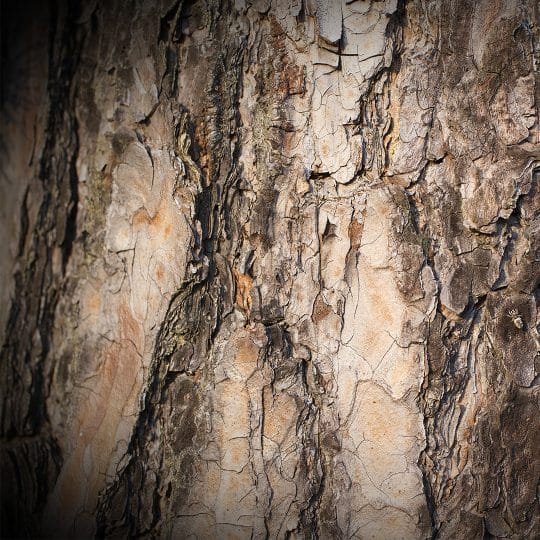6 Common Causes of Peeling Tree Bark
And How to Tell if it’s a Problem
Posted
August 1, 2024

Have you noticed pieces of bark on the ground around your trees? If so, it could either be a normal occurrence or signs of stress. Learn about the common causes of peeling tree bark and what you can do to help ensure the health of your tree.
Signs of a Peeling Problem
Just as early leaf drop and broken branches can be a sign of tree issues, peeling bark can also raise some red flags. However, some trees go through a natural shedding process, so it’s not always a bad sign. One of the best ways to tell if your tree is still healthy is to look at the trunk where the bark peeled away. If the remaining wood is fresh and green, it’s good. If there are dark growths or mats of fungus beneath the peel, there’s a problem.
Here are some other reasons why peeling bark could be a call for help:
- Other signs of stress, such as cankers, sap, dead twigs, and leaves.
- A heat wave leads to dry, cracking bark.
- A sudden temperature drop followed by frost cracks the bark, typically on the south side of the trunk where sunscald is more prominent.
Trees that are stressed by extreme temperatures is just one cause of peeling bark that needs immediate attention.
Common Causes of Peeling Tree Bark
Strong, healthy trees can survive some bark damage. There are also specific species of tree—such as sycamore, birch, and maple—that are more likely to shed large chunks of bark during their natural growing process. However, peeling bark leaves any tree open and vulnerable to insects and pests. This is why it’s important to learn the common causes of peeling bark and act accordingly before it becomes a larger issue.
- Weather damage. In addition to extreme heat and cold, wet weather can also loosen bark. Then if the sun comes out and dries the bark too rapidly, it can split from the tree.
- Pests and wildlife. Some insects bore into the bark to feed and lay eggs. Bark beetles and carpenter ants can disrupt the flow of nutrients from the inside to the outer bark, weakening it and causing it to fall off. Squirrels and woodpeckers chew and peck, causing damage to the outside. Bears and deer also rub on the outer bark and could cause damage.
- Disease. Fungal diseases that infect the bark cut off nutrients and spread easily throughout the tree. Some disease originate in the roots, while others come from the leaves.
- Environmental stress. Drought, soil compaction, and poor drainage all negatively impact tree health and may result in peeling bark.
- Mechanical damage. Lawn maintenance tools such as lawnmowers and string trimmers can tear at the bark.
- Normal growth. As the trunk expands, old bark falls off. Even mature pine trees naturally shed bark at the base of the trunk.
So the next time you notice bits of bark falling from your tree, check for other signs of distress. As long as there’s no evidence of pests or fungus and the exposed wood looks healthy, the peeling isn’t a concern.
Restoring Damaged Trees
If peeling bark is accompanied by other signs of stress, there are several ways to help prevent further peeling and improve growing conditions.
- Proper maintenance. Make sure the tree is getting enough water, sun, and space to grow. Fertilize and mulch around the tree to nourish the soil, retain moisture, and protect against damage. Regular pruning also helps open up the canopy to allow sunlight and air to circulate.
- Pest control. Once a pest problem is identified, use the appropriate pesticide to correct the problem.
- Disease control. Remove any infected leaves, branches, and bark and properly dispose to prevent spreading. Use a specialized fungicide to help treat the tree.
- Protect the bark. Wrap the trunk with burlap in the winter to help prevent sunscald and wildlife damage. Add fencing or other border markers to keep lawnmowers and weed trimmers away.
- Consult an arborist. If you’re unsure of the main cause of the peeling bark or your tree is severely damaged, contact a certified arborist for a consultation. Not only will a pro be able to pinpoint the problem, but a recommended plan can be put in place to help stabilize, protect, and heal the tree. The sooner a pro gets involved, the more likely your tree will recover.
Contact Elite Tree Care once you start to see signs of peeling bark, disease, or pest infestation. Our specialists can help diagnose and treat any issue that arises. Even if it turns out to be a natural occurrence, it’s always a good idea to have your trees evaluated on a regular basis to help ensure their safety and health.

Download Your FREE Tree Planting Guide
Planting a tree is a cinch, as long as you are properly prepared. Get prepped to plant one tree or 100 with our straightforward guide.